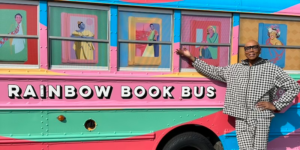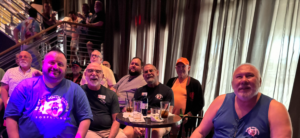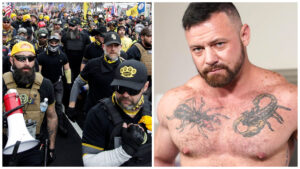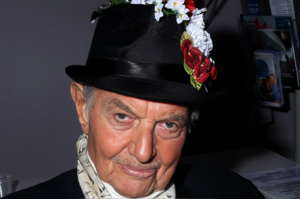At the beginning of April month, Netflix released a network original series named Transatlantic. The story revolves around an American journalist who, during 13 months spent in France in 1940-41, managed to arrange safe passage out of France onto the US for more than 2000 refugees who were in danger of losing their lives.
The American journalist credited with the rescue mission is Varian Fry, who his son says was gay, though Fry did not accept it publicly. This decision of Fry is understandable considering the laws and circumstances of that time.
However, this gay man has done more to humanity than we can ever imagine.

Born to an affluent Protestant family in 1907, Varian Fry graduated from Harvard with a degree in classics, becoming a journalist and then a political-book editor. In 1935, he spent several months in Berlin, where he witnessed bloody anti-Jewish riots.
The chief of Hitler's foreign press division told him candidly that the Nazi party was divided on whether to relocate the Jews or exterminate them.
In January 1933 Hitler rose to power as chancellor of Germany. In June 1940, Paris fell to invading Nazi forces, creating a massive exodus of refugees to the south of France.
On August 4, Fry joined 200 museum curators, artists, journalists, and Jewish refugees at a meeting at the Hotel Commodore in New York City. That afternoon, the Emergency Rescue Committee was born to help anyone who was persecuted by the Nazis, including European artists, philosophers, or writers (both Jewish and non-Jewish). Fry volunteered to travel to Europe German-occupied France to lead a daring rescue operation and become the ERC's agent in Vichy France.
Before that, Varian Fry used to work in New York as an editor for the Foreign Policy Association. He arrived in Marseilles with $3,000 strapped to one leg and a list of 200 artists and intellectuals thought to be in particular danger. He quickly recognized that the number was much higher. At this time, there were no refugee programs or aid agencies to ensure the safety of refugees.
Fry met Dr. Frank Bohn, a representative of the American Federation of Labor and the Jewish Labor Committee, who was also in France to assist in evacuating refugees. Bohn briefed Fry on the situation in Marseille, helping him to plan out his work. He also met Albert Hirschman, a Jewish-German humanitarian and refugee, who became an integral part of the team, and Lena Fischmann, who became Fry's secretary.
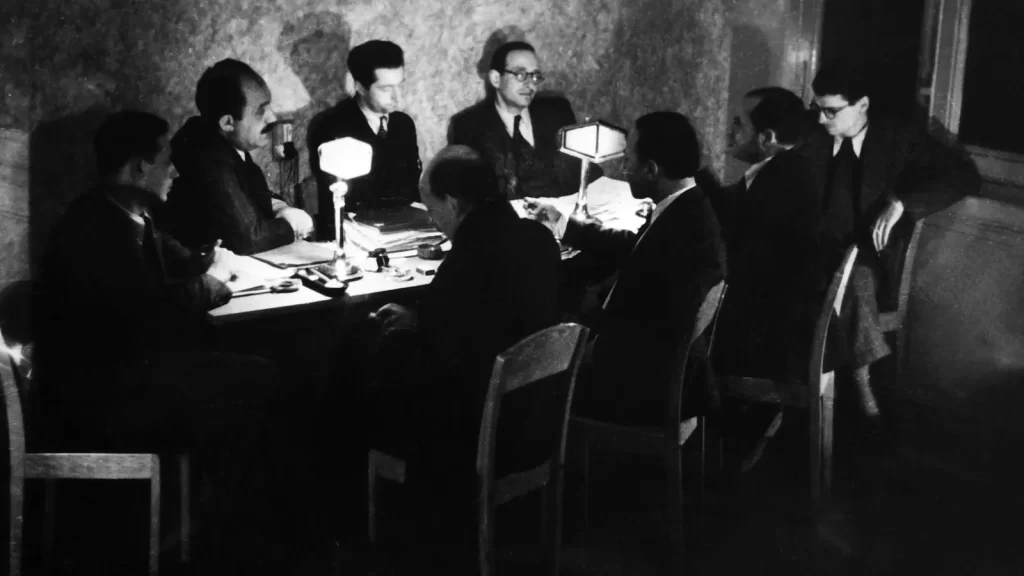
Arriving in Marseilles, Fry settled in his room in the hotel Splendide and began writing letters to the people on his list. Rumors of his arrival had spread, and hundreds of people came to ask him for assistance.
He soon discovered that the American consulate was not going to help him get people to the US and that he would have to work independently.
Faced with the plight of the desperate refugees, Fry decided to act and began finding ways – most of which were illegal – to smuggle out those refugees who faced the immediate danger of falling into German hands. The lines of refugees in front of his hotel room were so long that he rented an office and put together a group of associates – American expatriates, French nationals, and refugees – to help him in the process of classification. They established the American Rescue Center (Centre Americain de Secours) and began interviewing between 60-70 people every day.
Over the next year and a half, Fry and his small team helped at least 1,500 refugees escape from France to Spain and provided support to more than 2,000 others. They helped people of all different faiths and national origins, including many who were Jewish.
Among those spirited out of France were the artists like Marc Chagall and Max Ernst, the philosopher Hannah Arendt, and Nobel Prize-winning medical researcher Otto Meyerhof.
The collaborationist Vichy French government learned of Fry's efforts and expelled him in August 1941, “for helping Jews and anti-Nazis.” In June 1942, Vichy officials closed the ERC office, forcing the remaining staff in France to go underground. Many of them joined the French resistance movement and saved hundreds of other people.
Back in New York, Fry loudly, but in the end futilely, tried to alert the world to what would come to be known as the Holocaust.
In The New Republic in December 1942, Fry wrote, “There are things so horrible that decent men and women find them impossible to believe. Their ends are the enslavement and annihilation of the Jews . . . [and] after them, of all the non-German peoples of Europe, and if possible, the entire world.”

After his forced return to the United States Varian Fry was put under the surveillance of the FBI. For the rest of his life, he was avoided by his former colleagues and friends, and until his premature death in 1967 at age 59, he made a living as a Latin teacher in a boys' school. Shortly before his death, the French government awarded him with the Chevalier of the Legion d'Honneur.
For Fry, it was many years before he received much-deserved recognition. Five months before his death in 1967, France awarded him the French Legion of Honor. In 1996, Israel honored him posthumously, when he became the first American to receive its “Righteous Among Nations” medal.
In addition, on June 26, 2005, a large crowd of local residents and dignitaries in the town of Ridgewood, N.J., where Fry grew up, gathered to name a street after him.
Varian Fry's guiding conviction, that every life has dignity and is worth saving, remains the foundation of the IRC.
Fry clearly lived a life full of thrill and pride. But, the question still remains…

Was Varian Fry Gay?
According to Fry's son, Fry was a gay man at a time when it was impossible to lead an openly gay life. Julie Orringer, an American novelist, short story writer, and professor has written a book on Fry's life, named The Flight Portfolio. In the book, Orringer says, “ Writing in the 1940s, the real Fry didn't acknowledge the homosexual liaisons documented in later sources. As Orringer explains, “Fry's sexuality resists easy categorization—he was married twice and had two children—but we know he had relationships with other men.”

Sheila Isenberg, a historian, who has also written a book on Fry, calls the Transatlantic a “travesty”. Her main objection is that the show depicts Fry as gay. The New York Times itself, in a review of the book that the show is based on, also objected to the book's portrayal of Fry as gay.
But guess who wrote in to tell the NYTimes off? James Fry, Varian Fry's son.
His letter, which the Times buried under a few others, including one from Isenberg, had this to say:
“My father was indeed a closeted homosexual. I figured this out as a young man after my father had died, from many clues, most of which have never been available to researchers.”
Anna Winger, the showrunner for “Transatlantic”, wrote:
“We consider the letter from his son, James Fry, to The New York Times to be the last word on the subject.”
The truth of the matter is, maybe we will never know about his sexuality.
But as one recent Reddit post points out,
“A historian and a major publication trying to erase a historical figure's homosexuality. Fortunately, we also see the opposite of gay erasure (gay restoration?), with Fry's son and TV series creator setting the record straight gay.”
And if we go by some of the research articles published on the internet, there were many gay and lesbian soldiers and civilians who served during world war 2 under Nazi attack.
If you want to know more about it, stay tuned for our next article.
Author
-

Her motto is to Live and Let Live. She believes in an inclusive and accepting approach toward life and hopes that one day we, as humans, will learn to respect and accept each other. She trusts in open dialogue and creating a safe environment for children. She is a proud LGBTQ+ community member who is living happily with her partner for 6 years with Dexter, their pet.











